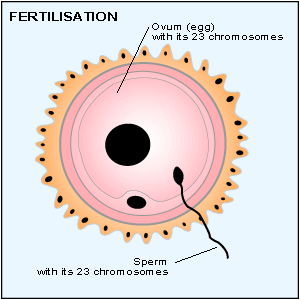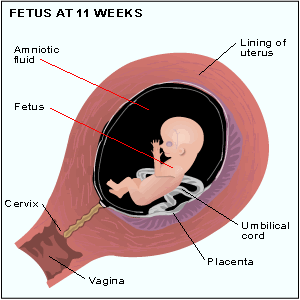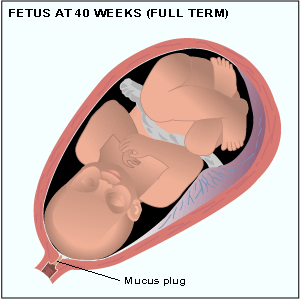This salt alternative could help reduce blood pressure. So why are so few people usingit?
The development of your baby in the womb is a wonderful process. We have compiled a month-by-month timescale of pregnancy. But keep in mind that different pregnancies do develop at different rates. Also, bear in mind that the method doctors and midwives use to date your pregnancy means that you could be around 2 weeks out from this timescale (see below).
In this description, we have adopted the method that doctors use. For example, where we write ‘week 8’ we have counted this from the first day of your last period — your baby will usually only be 6 weeks old at this point.
How doctors date your pregnancy
The average pregnancy lasts for 38 weeks from the date you conceive (this is called conception). However, doctors usually date your pregnancy from the first day of your last menstrual period — that is the day your last period started. Using this method a pregnancy is said to last 40 weeks (280 days).
Your due date is usually calculated as 40 weeks from the first day of your last period. However, fertilisation of your egg by sperm happens a day or 2 after ovulation, which occurs in the middle of a 28-day cycle, and then it is a couple of days before the fertilised egg implants in the uterus, so for the first 2 weeks of the 40-week ‘pregnancy’ you are not actually pregnant at all.
First month

After the egg has been fertilised by the sperm, it starts to divide into more cells. This happens all the time it is carried along the fallopian tube to the uterus. By the time it reaches the uterus the fertilised egg has become a cluster of cells which float in the uterine cavity until it embeds in the wall of the uterus. This implantation in the wall of the uterus is when conception is complete. This is roughly 4 weeks after day one of the last menstrual period if you have a 28-day cycle.
Second month
At 5 weeks the embryo is the size of a grain of rice (about 2 mm long) and would be visible to the naked eye. It has the beginnings of a brain with 2 lobes and its spinal cord is starting to form.
At 6 weeks of ‘pregnancy’ (3-4 weeks after fertilisation) the embryo has a head with simple eyes and ears. Its heart has 2 chambers and is beating. Small buds are present that will form arms and legs later. The beginnings of the spine can be seen and the lower part of the body looks like a tail.

At 7 weeks, the limb buds have grown into arms and legs. Nostrils can be seen on the embryo’s face. The heart now has 4 chambers.
At 8 weeks, the eyes and ears are growing, and your baby is about 2 cm long from crown to rump. The head is out of proportion with the body and the face is developing. The brain and the blood vessels in the head can be seen through the thin skin. The bones in the arms and legs start to harden and elbows and knees become apparent. Fingers and toes can also be seen.
Third month
What is known as the embryonic period finishes at the end of week 8 and the fetal period begins. This period sees rapid growth of the fetus, and the further development of the organs and tissues that were formed in the embryonic period.

At week 9 the head is almost half the crown to rump length of the fetus. Then the body grows substantially in length until by week 12, the head is more in proportion. By the time you are 12 weeks’ pregnant, your baby is just over 5 cm long from crown to rump.
Its body is fully formed, including ears, toes and fingers complete with fingernails. The external genitals appeared in week 9, and now, by week 12, have fully differentiated into male or female genitals. By week 12 the eyes have moved to the front of the face and the eyelids remain closed together.
Fourth month
Your baby may suck its thumb now. By 14 weeks your baby will be about 9-10 cm long. Its body is now covered with a layer of fine hair called lanugo. By 16 weeks its face is becoming more human in appearance, although the chin is small and the mouth is quite wide. Between 16 and 24 weeks you should feel your baby move for the first time — it may at first feel like butterflies.
Fifth month
The rapid growth that your baby has been experiencing now begins to slow a little. By week 20 your baby measures about 18 centimetres from crown to rump and is half as long as it will be when born. The legs are now in proportion with the body and the fingernails are well developed. Faint eyebrows are visible. At this stage, you will feel your baby moving about a lot, often when you lie down.

Sixth month
By 24 weeks your baby’s organs are fully formed. The baby now has the face of a newborn baby, although the eyes are rather prominent because fat pads are yet to build up in the baby’s cheeks. The eyelids are fused until weeks 25 to 26 when they open.
The skin is wrinkled, red and thin with little underlying fat. The skin is covered with a waxy substance called vernix, which protects it while it is floating in the uterus. The body is well muscled, but still thin. The baby has become better proportioned, with the size of the body catching up with the size of the head.
Your baby’s hearing is also well developed by this stage; the baby will respond to noise.
Seventh month
By 28 weeks lanugo hair has almost gone and hair is present on the head. Fat is being deposited under the skin.
Eighth month
Your baby is becoming plumper. By 30 weeks the toenails are present and by 32 weeks the fingernails have reached the ends of the fingers. The baby’s eyes will be open when the baby’s awake.
By about 32 weeks the baby will have settled into a downward position as there is no longer enough room left in the womb for it to move about freely. You will feel occasional vigorous jabs of the baby’s arms and legs.
If your baby is a boy, his testes will migrate down into the scrotum in the 8th month.
Ninth month

Sometime between 36 and 40 weeks, the baby’s head will engage — that is, the head will be lying just on top of your cervix.
The lanugo hair that had covered your baby has now mostly disappeared, although some hair may remain low on the forehead, in front of the ears and down the centre of the back. The toenails should have reached the tips of the toes.
Full term
By full-term, your baby should weigh about 2.7 to 3.5 kg, although full-term babies can weigh anything from 2.5 to 5 kg, and measure 35 to 38 centimetres from crown to rump and 44 to 55 cm from the baby’s head to its toes. These are just average figures, though, and there can be wide variation in the measurements. So now, 38 weeks after conception, your baby has all its organs and body systems ready for the big moment when it is born into the world.
Related
ncG1vNJzZmilqZm%2Fb6%2FOpmWarV%2BXrqO1xKxkqaqVnLuiusKyZpuZkq56tHnDnq2epJ%2Bluqa602agp2WknbJuw86mmWg%3D